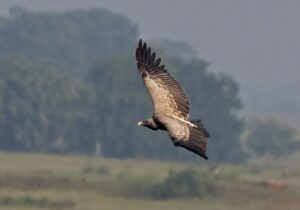A passion for the natural world drives many of our adventures. And when we’re not actually outside, we love delving into the discoveries about the places where we live and travel. Here are some of the best natural history links we’ve found this week.
Ice loss is changing local seal hunts: Inupiat residents in northwestern Alaska hunt bearded seals. Continually declining sea ice has drastically reduced their available hunting time and forced them to change their practices. From 2003 to 2019, the seal-hunting season diminished by over two weeks. To maintain the haul they require for their communities, the hunters have had to make more frequent trips in larger stretches of open water. This significantly increases the dangers of the hunt.
New species of beaked whale identified: Scientists have accidentally identified a new species of beaked whale, the Ramari’s beaked whale. It lives in the waters around South Africa, Australia, and New Zealand. Researchers were investigating another species, the True’s beaked whale, when they made the discovery. “The genetics and skull shape of True’s beaked whales in the northern hemisphere are very different from True’s beaked whales in the southern hemisphere. It’s clear that they are different species,” said the authors of the study.

The 2,000-year-old amethyst seal found in Jerusalem, Israel. At the top of the seal, a branch that may be the Biblical persimmon. Photo: Israel Antiquities Authority
The Biblical persimmon
2,000-year-old amethyst seal found in Israel: A 2,000-year-old seal has turned up in the foundations of the Western Wall in Jerusalem. Commonly used to sign documents and worn as jewelry, the amethyst seal is engraved with a dove and fruit-bearing branch. The plant may be the Biblical persimmon, which is not related to the modern orange persimmon. “This may be the first time a seal has been discovered with an engraving of the precious and famous plant, which until now we could only read about in historical descriptions,” said archaeologist Dr. Shukron.
Why do only mammals have tusks? The only animals on earth with tusks are mammals. Scientists have now discovered that animals such as rhinos, walruses, and elephants all have an ancient, non-mammalian ancestor that predates the dinosaurs. “We were able to show that the first tusks belonged to animals called dicynodonts,” said Ken Angielczyk, author of the study. The dicynodonts lived from 270 to 201 million years ago. Though their closest living relatives are mammals, they looked more reptilian.

Great White Shark. Photo: Shutterstock
Great white sharks bite humans due to mistaken identity: Great white shark attacks on humans could sometimes be a case of mistaken identity. Scientists used footage of seals, sea lions, and humans in the water in a “shark vision” model that replicates the vision of a juvenile shark. “We found that surfers, swimmers, and pinnipeds (seals and sea lions) on the surface of the ocean will look the same to a white shark looking up from below because these sharks can’t see fine details or colors,” said Laura Ryan, a researcher at Macquarie University.
Pluto supporters press their case
Pluto is no longer a planet –- or is it? In 2006, poor Pluto lost its full planetary status and was reclassified as a dwarf planet. Leading up to this, astronomers discovered several objects beyond Neptune that were similar to Pluto. The choice was to add more planets or to dock Pluto from the list. The International Astronomical Union chose the latter. But 15 years later, the debate over Pluto continues. Planetary scientist Jim Bell argues that “Everything with interesting geology should be a planet. It doesn’t matter where you are, it matters what you are.”

The first photo of Shelley’s Eagle Owl in 150 years. Photo: Robert Williams
Rare owl photographed in wild for the first time: Shelley’s eagle owls are the largest owls in Africa’s rainforests and among the largest owls in the world, at up to 61cm long. Despite their size, photographers have not managed to capture a single picture of this rare owl in the wild in 150 years. Then on October 16, scientists from Imperial College London snapped a photo of the large bird in Ghana’s Atewa forest. “This is a sensational discovery,” enthused Dr. Nathaniel Annorbah. “We’ve been searching for this mysterious bird for years in the western lowlands. So to find it here in the ridgetop forests of the east…is a huge surprise.”






